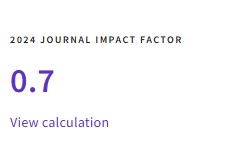Coaches' opinions on the current volleyball rules in developmental categories
DOI:
https://doi.org/10.24310/riccafd.13.3.2024.20246Keywords:
rules modification, teaching-learning, sports initiation, team sportsAbstract
The aim of the study was to analyze the opinions and perspectives of volleyball coaches regarding the current regulations and potential proposals for changes in the U11, U13, and U15 categories. The sample consisted of 107 volleyball coaches (age: 38.8 ± 11.4 years). Data collection was conducted through an ad-hoc questionnaire. The variables analyzed were a) court dimensions; b) net height; c) ball size; d) number of players on the court; e) mandatory participation or substitution of all players; f) serve; and g) rotation system. The results showed that coaches believe there is a high need for changes, primarily in minivolley (U11 and U13). In the U13 category, most coaches do not propose modifications to the net, court size, or number of players.
Downloads
Metrics
References
Giménez FJ, Abad MT, Robles J. El proceso de formación del jugador durante la etapa de iniciación deportiva. Apunts Educació física i esports. 2012;47-55.
Blázquez D. Iniciación a los deportes de equipo. Martínez Roca; 1986.
DiFiori JP, Güllich A, Brenner JS, Côté J, Hainline B, Ryan E, et al. The NBA and Youth Basketball: Recommendations for Promoting a Healthy and Positive Experience. Sports Medicine. 1 de septiembre de 2018;48(9):2053-65.
García-Angulo A, Palao JM, Giménez-Egido JM, García-Angulo FJ, Ortega-Toro E. Effect of the modification of the number of players, the size of the goal, and the size of the field in competition on the play actions in U-12 male football. Int J Environ Res Public Health. 2020;17(2):518.
Bayer C. La enseñanza de los juegos deportivos colectivos. Hispano Europea; 1986.
Kirk D, MacPhail A. Teaching games for understanding and situated learning: Rethinking the Bunker-Thorpe model. Journal of teaching in Physical Education. 2002;21:177-92.
Berjaud P. Las reglas de juego y su desarrollo. Edición Española. International Volley Teach; 1995.
Birrento RA, Giménez-Egido JM, Ortega E. Opinión de entrenadores y expertos sobre modificaciones reglamentarias en la categoría preinfantil (Under-13) en baloncesto. Journal of Sport and Health Research. 2023;15(2):409-18.
Baacke H. Mini-Volleyball. An introduction to the game of volleyball for children. Scottish Volleyball Association; 1978.
FIVB. Reglas oficiales de voleibol 2021-2024. 2021.
Garcia RM, Meireles CHA de, Pereira EGB. Evolução e adaptação histórica do voleibol. Lecturas: Educación Física y Deportes. 10 de octubre de 2021;26(281):183-203.
Ureña A, Gallardo C, Delgado J, Hernández E, Calvo R. Estudio sobre la evolución de las reglas de juego en voleibol. Habilidad Motriz: Revista de Ciencias de la Actividad Física y del Deporte. 2000;16:32-9.
RFEVB. Reglas de Juego – Voleibol (Categorías Alevín / Benjamín). 2021.
Halouani J, H’mida C, Trabelsi K, Clark CC, Glenn J, Chtourou H. Physiological responses of small-sided vs. regular games in youth volleyball players. Biol Sport. 2023;40(1):303-9.
Rodrigues MCJ, Rocha ACR, Barbosa CA, Figueiredo LS, Lima COV, Laporta L, et al. How small-sided games’ court dimensions affect tactical-technical behavior in beginner volleyball athletes. Int J Sports Sci Coach. 1 de diciembre de 2022;17(6):1385-95.
Palao JM, Ureña A, Moreno MP, Ortega-Toro E. Effect of changes in the net height, court size, and serve limitations on technical-tactical, physical, and psychological aspects of U-14 female volleyball matches. Front Psychol. 10 de enero de 2024;14:1341297.
Buszard T, Oppici L, Westerbeek H, Farrow D. Implementation of a modified sport programme to increase participation: Key stakeholder perspectives. J Sports Sci. 17 de abril de 2020;38(8):945-52.
Coutinho D, Gonçalves B, Folgado H, Travassos B, Santos S, Sampaio J. Amplifying the effects of adding extra players during association football game-based scenarios. PLoS One. 1 de junio de 2022;17(6 June).
Echeverría CJ, Ortega E, Palao JM. Evolution of reception efficacy and execution in women’s volleyball according to level of competition–a descriptive study aged from 14-year-old to adult professional players. Central European Journal of Sport Sciences and Medicine. 2019;27:55-64.
Downloads
Published
How to Cite
Issue
Section
License
Copyright (c) 2024 Revista Iberoamericana de Ciencias de la Actividad Física y el Deporte

This work is licensed under a Creative Commons Attribution-NonCommercial-ShareAlike 4.0 International License.
All the contents published in Revista Iberoamericana de Ciencias de la Actividad Física y el Deporte are subject to the Creative Commons Reconocimento-NoComercia-Compartirigual 4.0 license, the full text of which can be found at <http://creativecommons.org/licenses/by-nc-sa/4.0>
They may be copied, used, disseminated, transmitted and publicly exposed, provided that:
The authorship and original source of your publication (Journal, editorial and URL of the work) are cited.
They are not used for commercial purposes.
The existence and specifications of this use license are mentioned.

Copyright is of two kinds: moral rights and patrimonial rights. Moral rights are perpetual, inalienable, inalienable, inalienable, inalienable and imprescriptible prerogatives.
In accordance with copyright legislation, Revista Eviterna recognizes and respects the moral rights of the authors, as well as the ownership of the economic right, which will be transferred to the University of Malaga for dissemination in open access.
The economic rights refer to the benefits obtained by the use or disclosure of the works. Revista Iberoamericana de Ciencias de la Actividad Física y el Deporte is published in open access and is exclusively authorized to carry out or authorize by any means the use, distribution, disclosure, reproduction, adaptation, translation or transformation of the work.
It is the responsibility of the authors to obtain the necessary permissions of the images that are subject to copyright.
















9.png)
